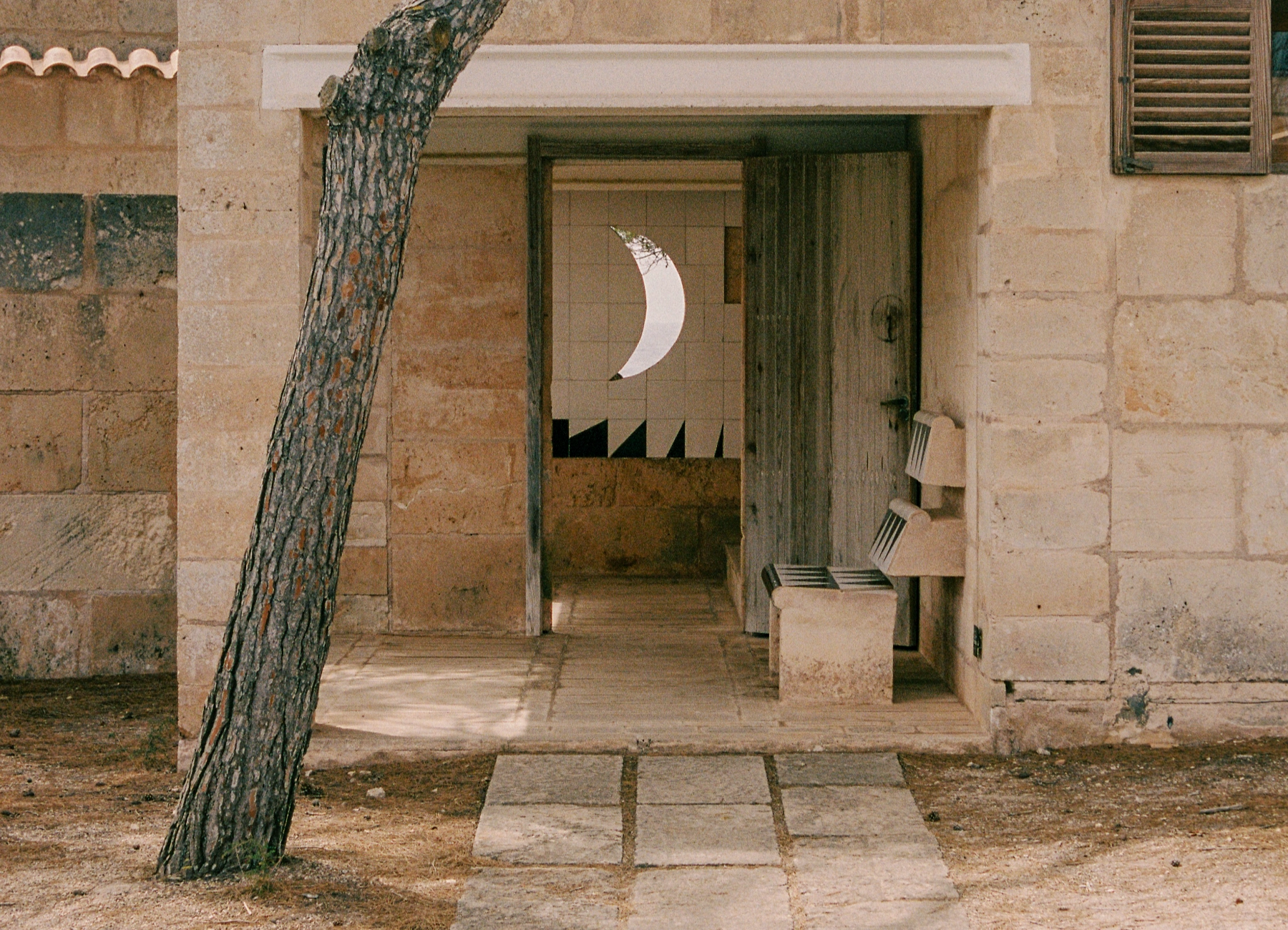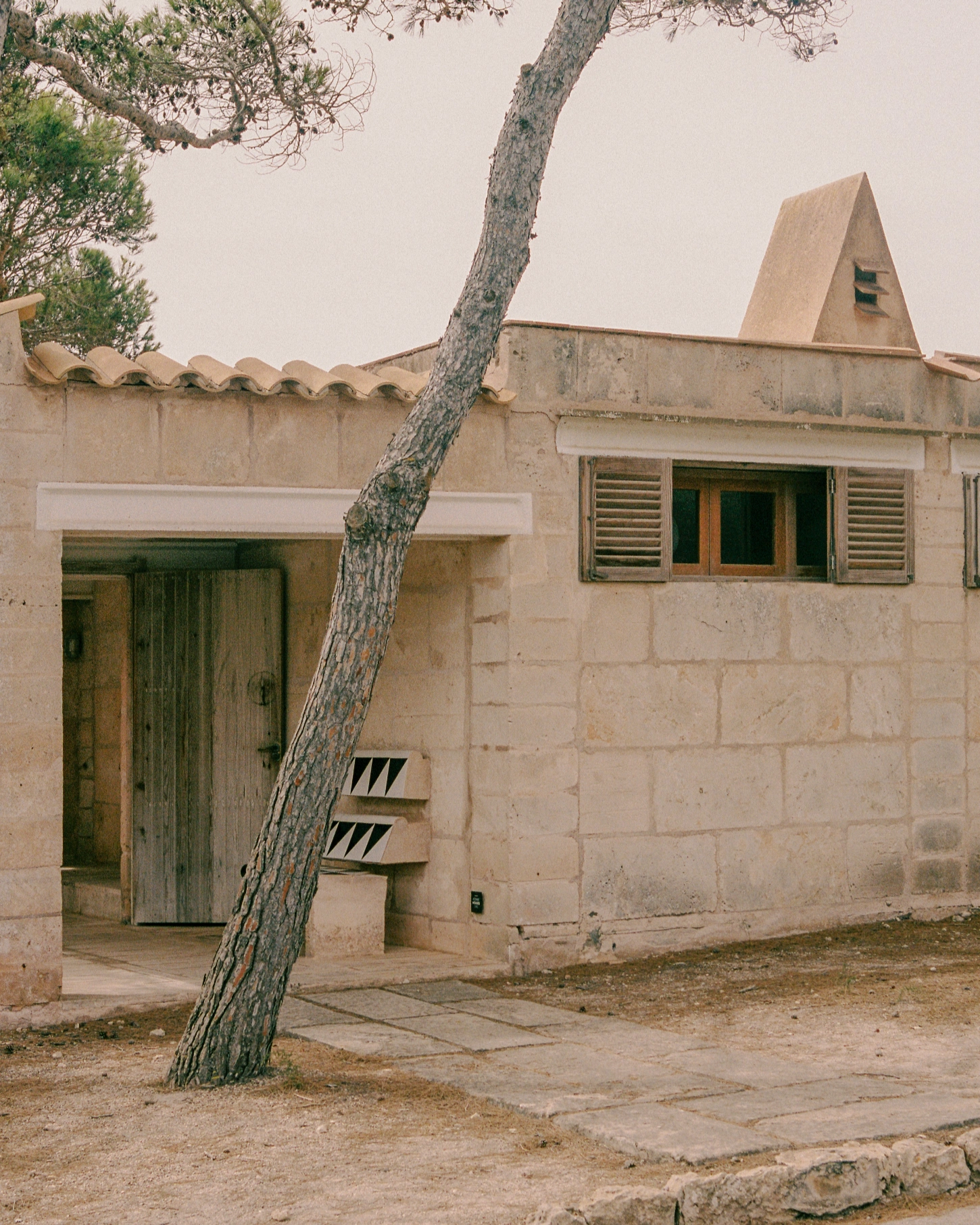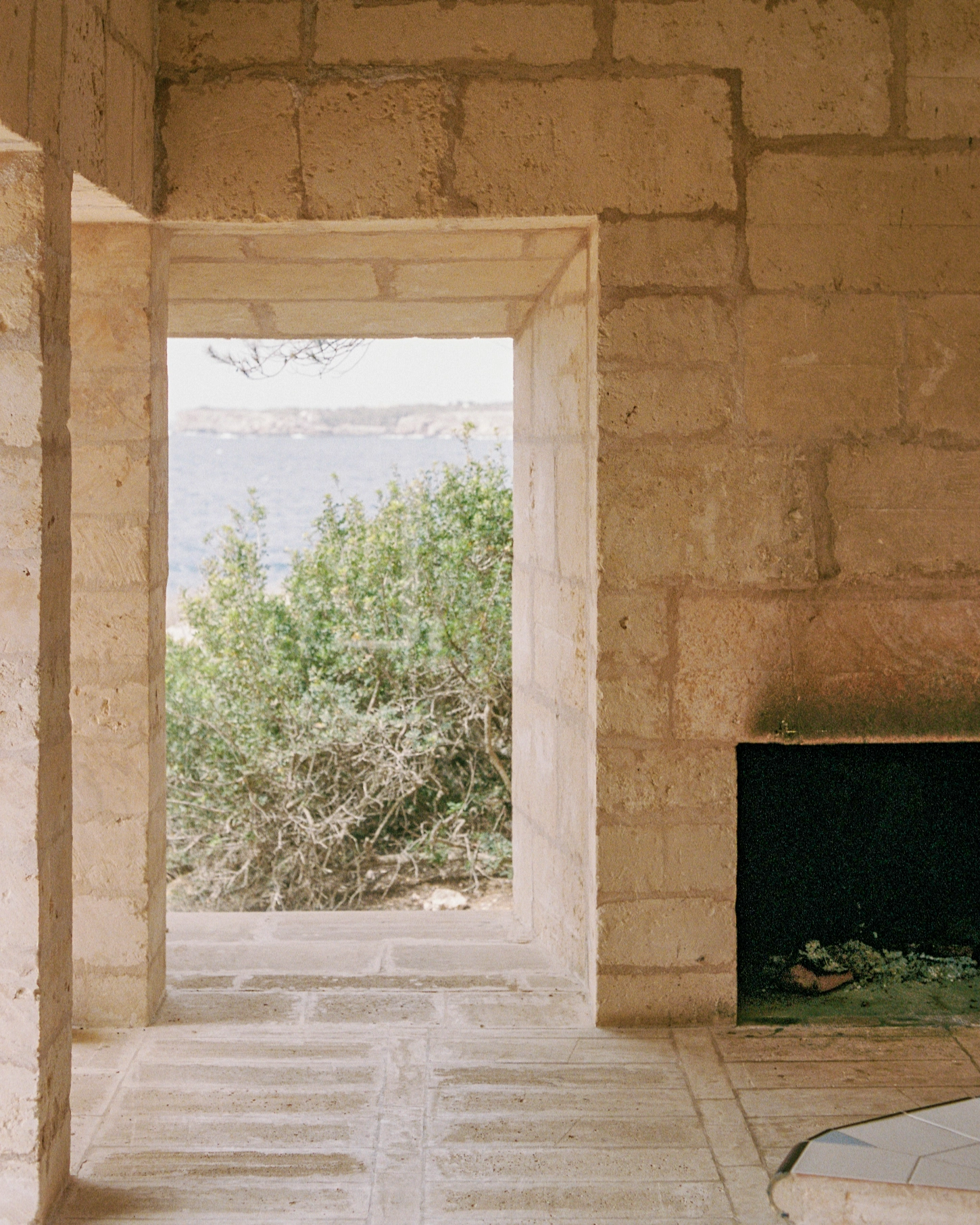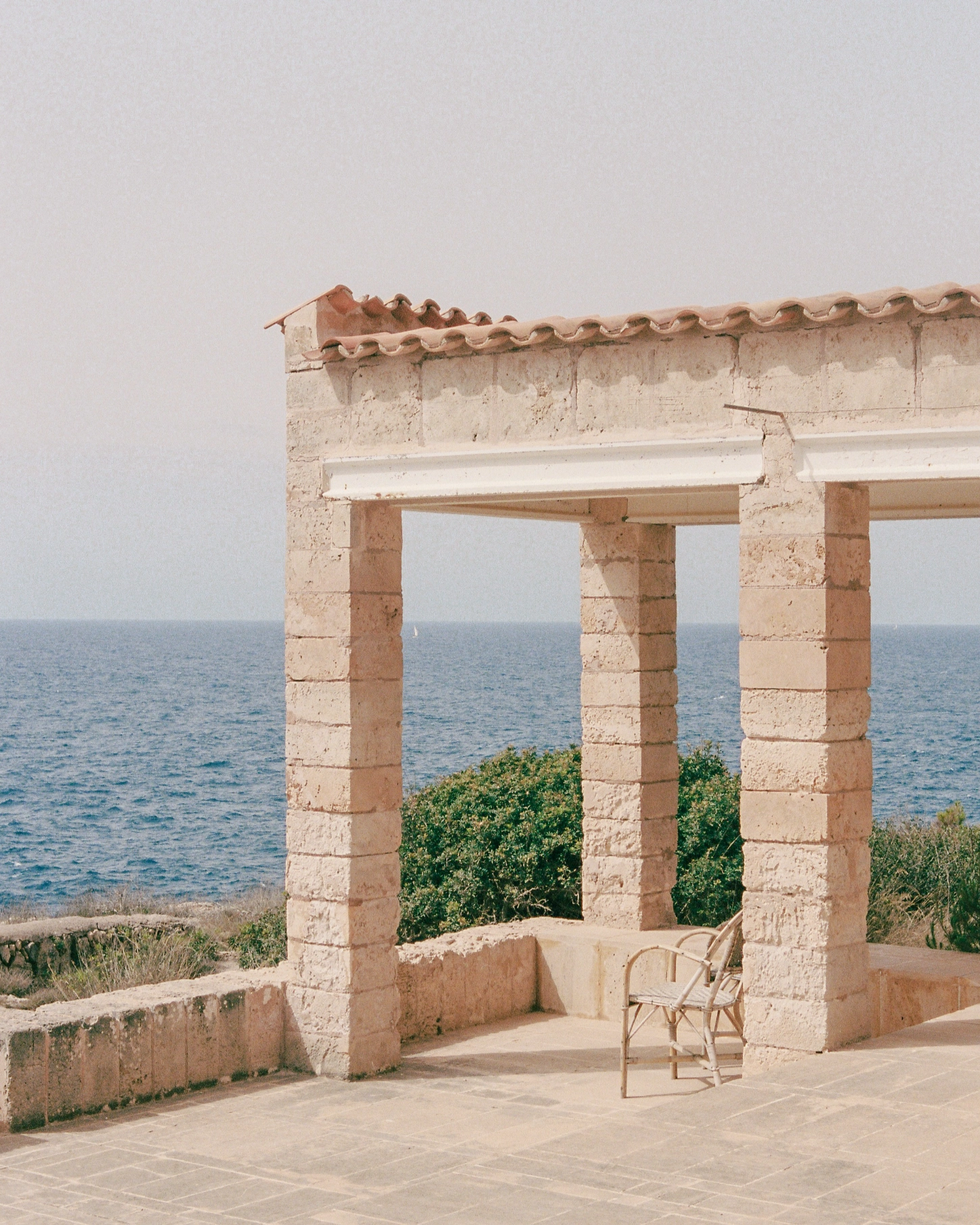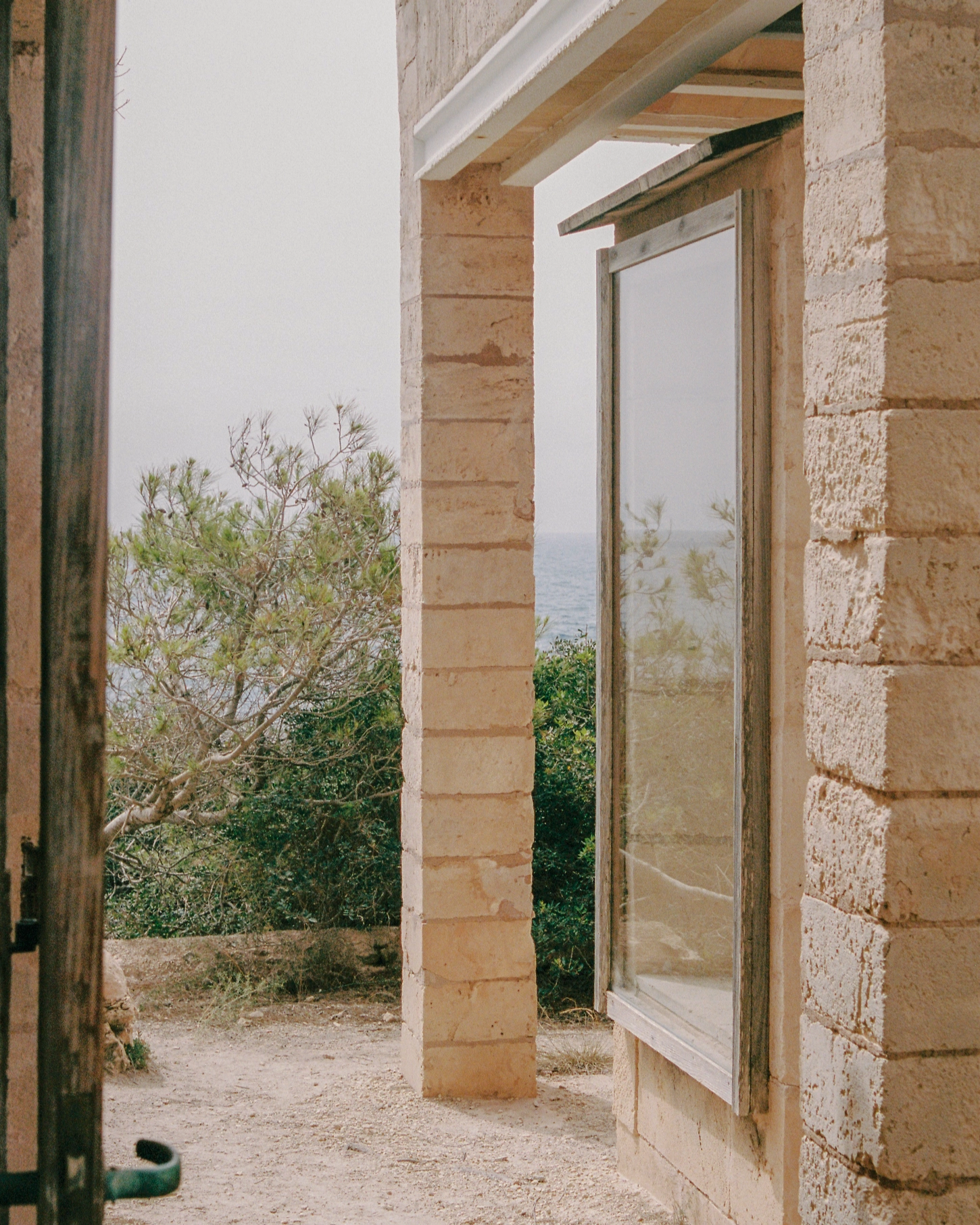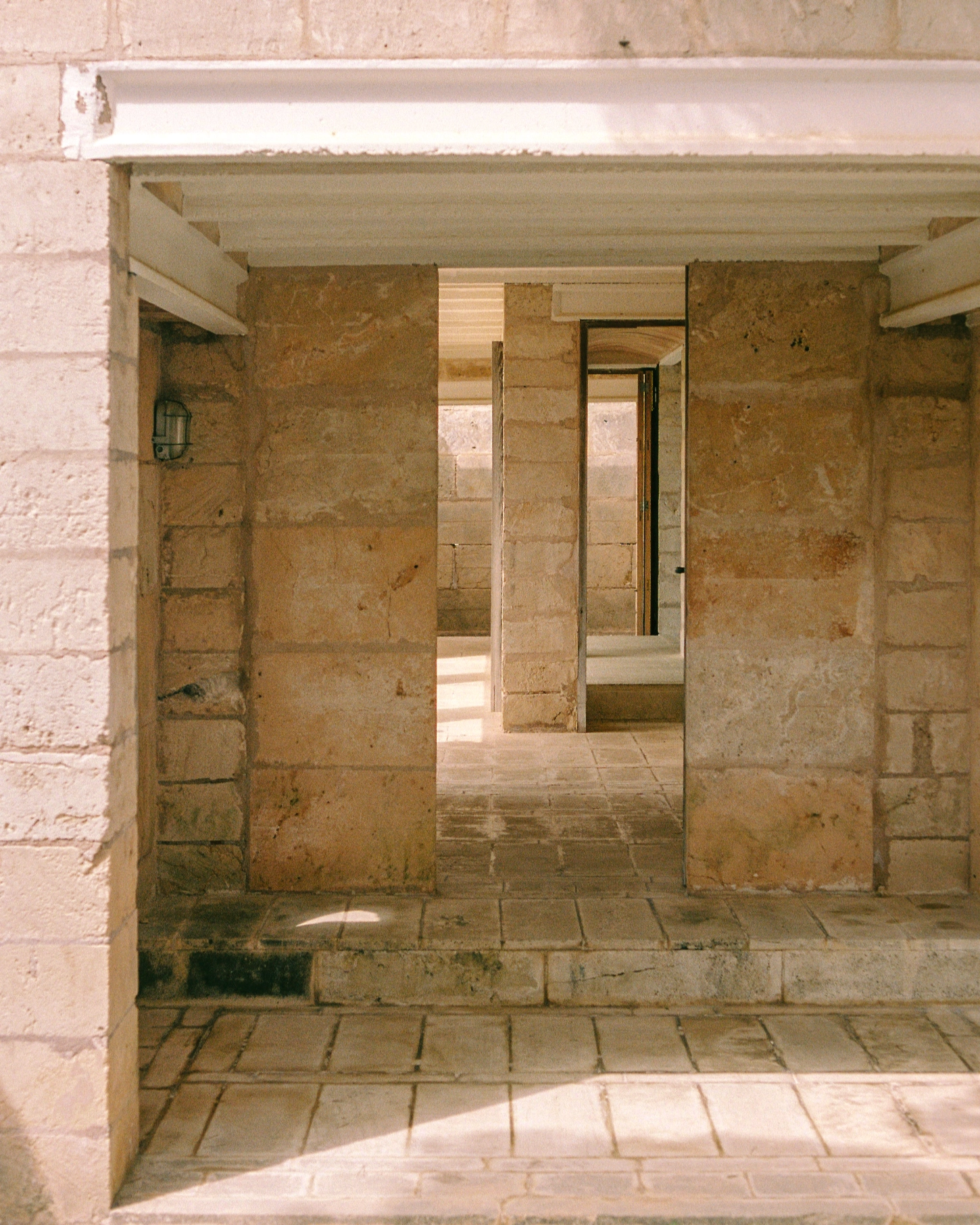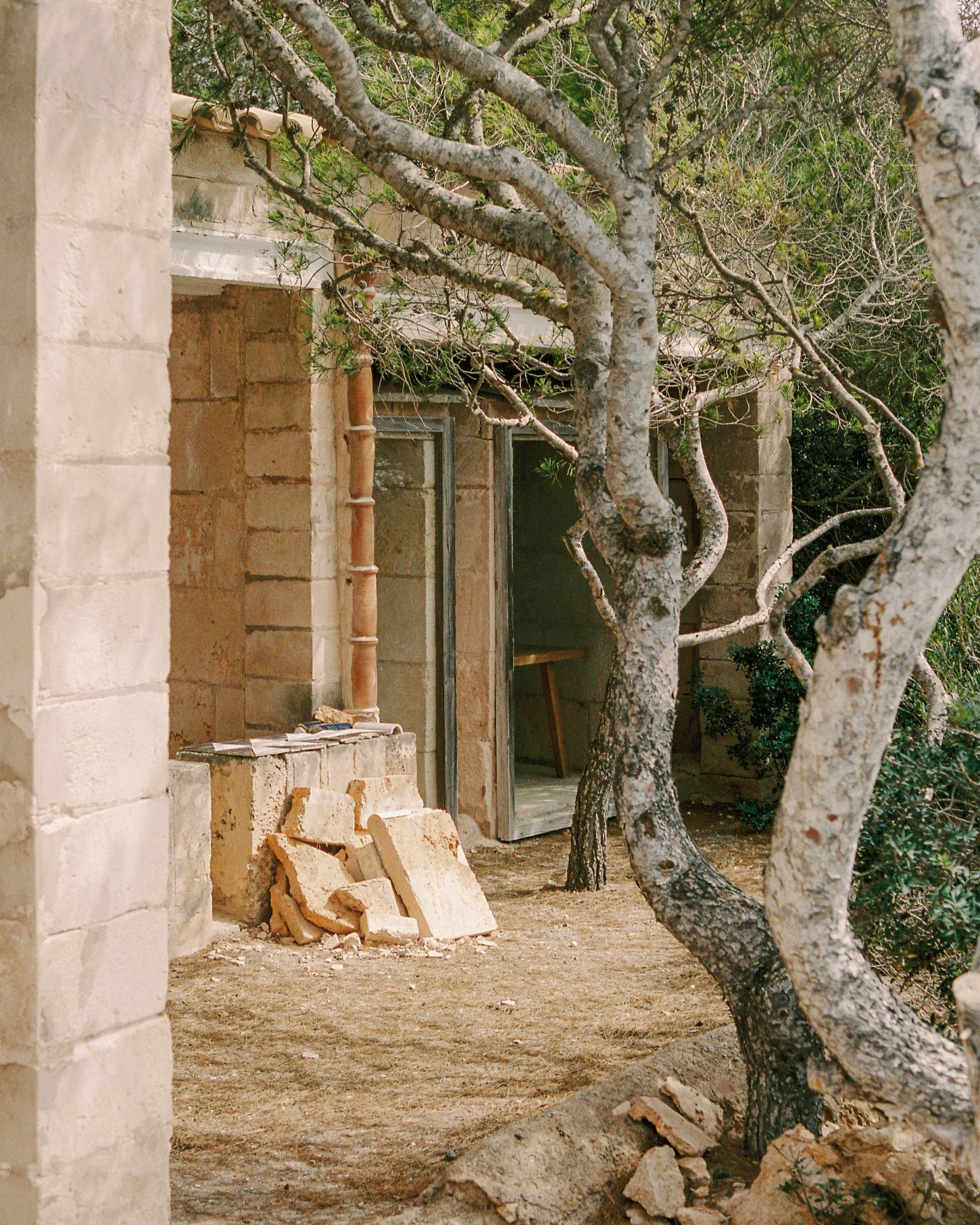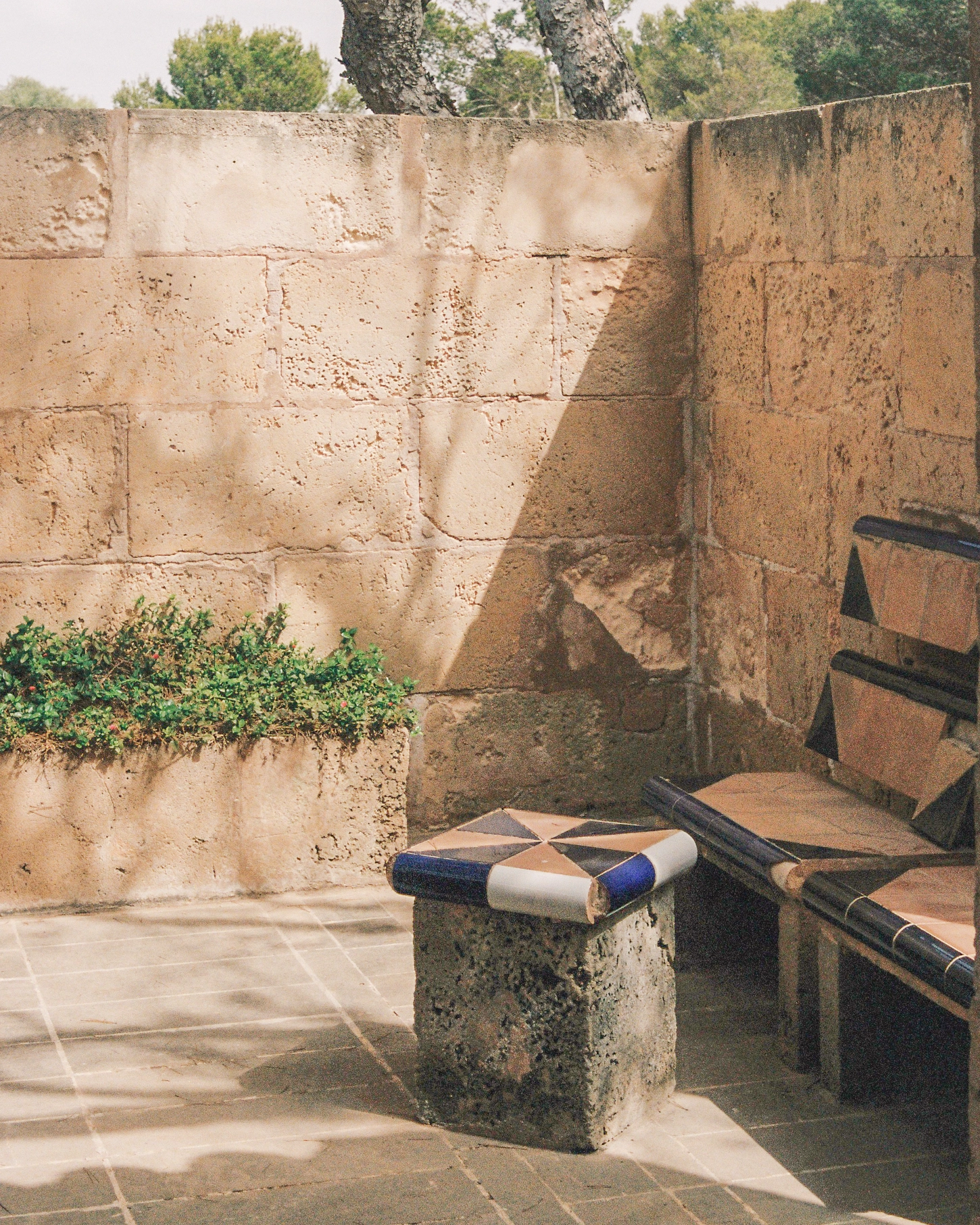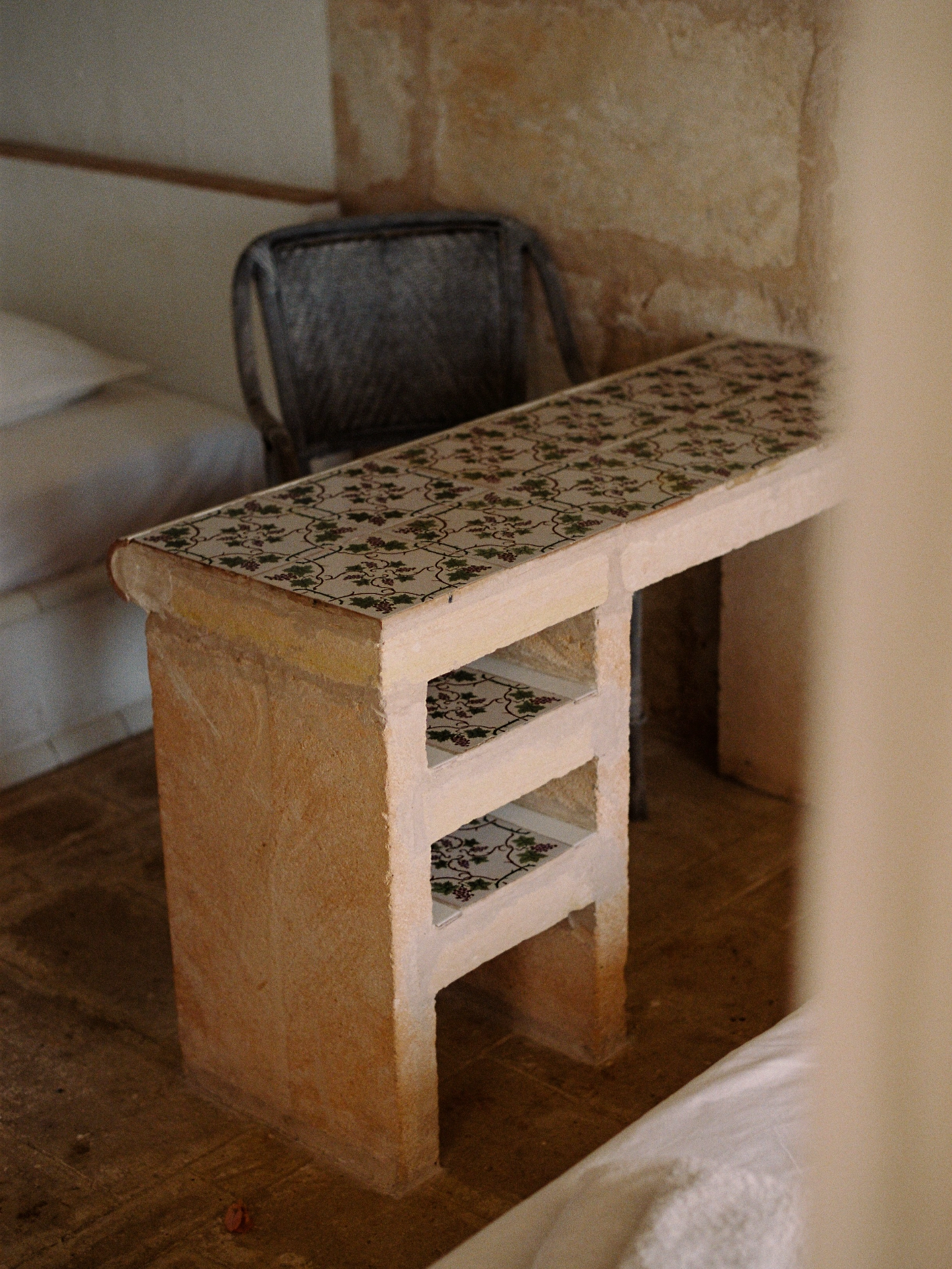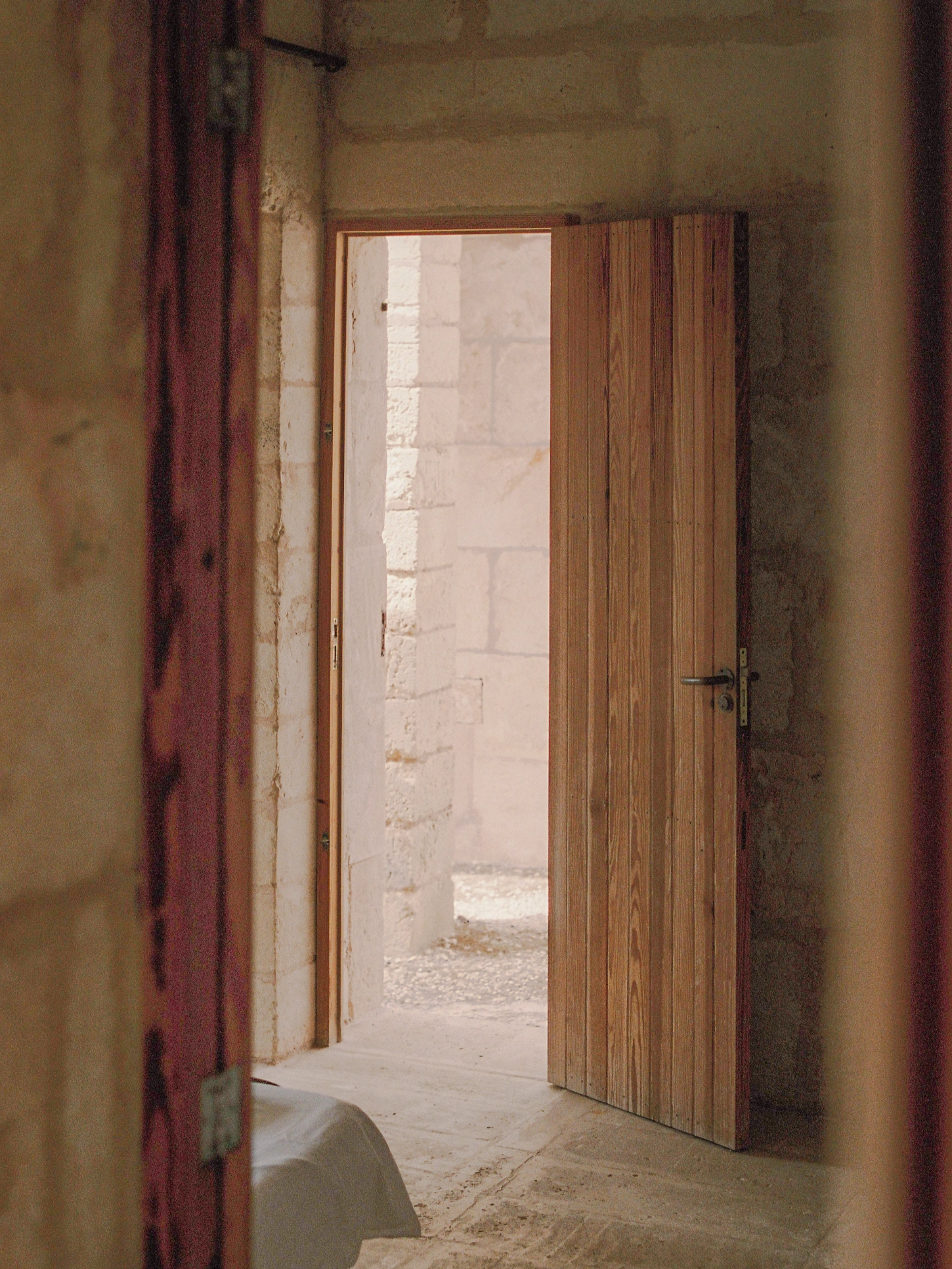Set high on a limestone bluff outside Porto Petro, Can Lis, photographed by Alex Dormon, feels less like a statement and more like a pause.
Designed by Jørn Utzon in the early 1970s as a home for his family, it absorbs the rhythm of the island — the shifting light, the salt in the air, the sound of the sea below.
When Utzon arrived in Mallorca, he was seeking more than a home. Having left Sydney in 1966 amid the political turbulence surrounding his Opera House project, he had spent years adrift between Denmark and the Mediterranean. The island offered something elemental: stone, light, horizon. He found a narrow plot perched high above the sea and began drawing a house that would not impose, but belong.
Completed in 1972, Can Lis is a collection of four low pavilions, each turned slightly toward the water, tethered together by short walls and shaded courtyards. There is no grand entrance, no axial plan — only a sequence of thresholds. One passes through narrow passages that open suddenly to sea and sky, like inhaling. Every room feels autonomous yet related, the way small chapels might cluster along a hillside.
Utzon built what was underfoot. The walls are marés, a porous sandstone native to Mallorca, cut in warm ochres and creams. Floors are laid in Santanyí stone, soft to the foot and pale enough to catch the light as it slides through the day. Shutters and beams are of pine, left untreated so the salt can write its own story across them. Even the furniture is part of the architecture — benches, beds, and counters carved directly from stone, eliminating any line between living and structure.
It is impossible to speak of Can Lis without speaking of light. Utzon, who often compared architecture to music, composed here in a minor key. The deep window embraces the Mediterranean glare, framing the sea not as spectacle but as pulse — distant, constant, blue beyond measure. Morning enters quietly, tracing lines across the floors; by afternoon, the rooms turn amber and cool.
There is an almost monastic discipline to the way the house receives its surroundings. It doesn’t command the view; it listens to it. This humility, this near-absence of ornament, is what gives Can Lis its lasting authority. The architecture is both modern and ancient, hovering somewhere between Le Corbusier’s rigor and the cave dwellings of the Balearic coast.
For two decades, the Utzons lived here — Jørn and his wife Lis (for whom the house is named), raising their children between the cliffs and the pines. Eventually, the beauty of the place became a burden: the wind too insistent, the light too merciless, the tourists too curious. They moved inland, building Can Feliz, a quieter echo of the first house, more sheltered and secluded.
Can Lis was later restored by the Utzon Foundation, its patina left largely intact. Today it serves as a retreat for architects and artists, a place to study not grandeur but gravity — how a structure might anchor itself to time, to place, to the smallest gestures of living.
London-based photographer Alex Dormon approaches Can Lis with a quiet sensitivity that mirrors the spirit of the house itself. Through his lens, the limestone, light, and shadow unfold with measured clarity.

